Introduction to Palette Knives
Palette knife is a versatile tool used by artist to apply and manipulate paint on canvas other surfaces. Unlike traditional paintbrushes, which have brushes, knives consist of a flat, often flexible metal blade attached to a handle. They come various shape and sizes, allowing artist to achieve different effects and textures in their work.
The history of palette knives dates back centuries, with evidence of their use found in ancient civilizations such as Egypt and Rome. However, they become more widely recognized as painting tools during the Renaissance period, when artists began experimenting with new techniques and materials. Over time palette knives evolved to meet the needs of artists, with innovations of blade design and handle construction.
In painting, palette knives serve multiple purposes. They can be used to mix color on the palette, apply paint to the canvas, and create various textures and effects. Unlike brushes, which typically produce smooth, blended strokes, palette knives can create bold, impasto marks with distinct ridges and peaks. This versatility makes them popular among artists working in a range of styles, from realism to abstraction. Palette knives are versatile tools used by artists to apply and manipulate paint on canvas or other surfaces. Unlike traditional paintbrushes, which have bristles, palette knives consist of a flat, often flexible metal blade attached to a handle. They come in various shapes and sizes, allowing artists to achieve different effects and textures in their work.
The history of palette knives dates back centuries, with evidence of their use found in ancient civilizations such as Egypt and Rome. However, they became more widely recognized as painting tools during the Renaissance period, when artists began experimenting with new techniques and materials. Over time, palette knives evolved to meet the needs of artists, with innovations in blade design and handle construction.
In painting, palette knives serve multiple purposes. They can be used to mix colors on the palette, apply paint to the canvas, and create various textures and effects. Unlike brushes, which typically produce smooth, blended strokes, palette knives can create bold, impasto marks with distinct ridges and peaks. This versatility makes them popular among artists working in a range of styles, from realism to abstraction.
Overall, palette knives offer artists greater control and freedom in their painting process. They allow for spontaneous mark-making and encourage experimentation with texture and composition. While traditional brushes remain essential tools for many artists, palette knives offer a unique approach to painting that continues to inspire creativity and innovation in the art world.
Types of Palette Knives
Palette knives come in a variety of types, each designed for different painting techniques and applications:
1. Diamond-Shaped Palette Knives:
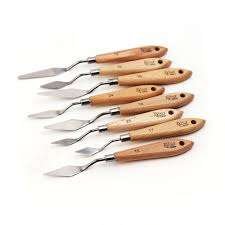
These knives have a diamond-shaped blade that is versatile and suitable for mixing paint, applying texture, and creating both sharp and soft edges.
2. Trowel-Shaped palette Knives:
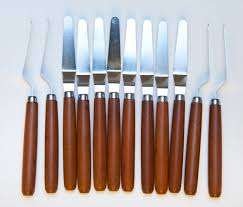
Trowel-shaped knives have a flat, rectangular blade that is ideal for spreading paint smoothly and evenly across the canvas. They are often used for blending colors and creating large areas of uniform texture.
3. Offset Palette Knives:
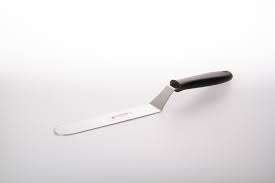
These knives have a bent or offset blade, which allows artists to work with greater precision and control, especially in tight spaces or when painting detailed areas.
4. Cranked Palette Knives:
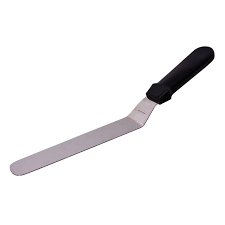
Cranked knives have a blade that is bent at an angle, providing artists with a more ergonomic grip and allowing for more comfortable and natural movements while painting.
5. Angled Palette Knives:

Angled knives have a blade that is angled or tapered, making them suitable for creating expressive brushstrokes, applying paint in layers, and adding intricate details to a painting.
6. Spatula Palette Knives:
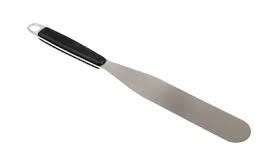
Spatula knives have a wide, flat blade that is perfect for applying thick layers of paint, scraping paint off the palette, and creating textured effects such as impasto.
Each type of palette knife offers unique advantages and can help artists achieve different effects in their paintings. Experimenting with various shapes and sizes can lead to new discoveries and techniques in painting.
Techniques with Palette Knives
Palette knives offer a versatile range of techniques that artists can explore to create unique textures and effects in their paintings:
1. IMPASTO:

Palette knives are excellent tools for applying thick layers of paint known as impasto. Artists can load paint onto the knife and apply it directly to the canvas, creating textured and three-dimensional effects.
2. SCRAPING:
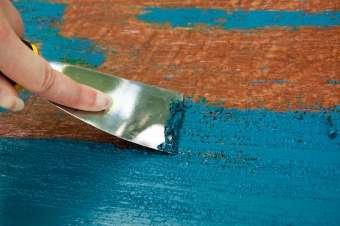
Palette knives can be used for scraping paint across the surface of the canvas, allowing artists to reveal underlying of color or create interesting textures by removing excess paint.
3. MIXING:
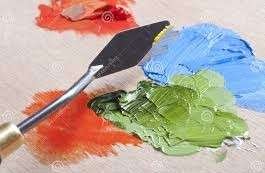
Palette knives are commonly used for mixing colors on the palette. Their flat, flexible blades make it easy to blend different hues together and achieve precise color combinations.
4. BLENDING:
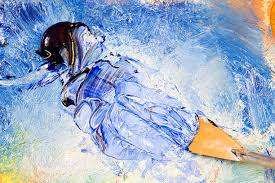
While traditional brushes are often used for blending colors palette knives offer a unique approach. Artists can gently mix colors on the canvas using the edge of the knife, creating soft transitions and subtle gradations.
5. TEXTURING:

Palette knives can be used to create a variety of textured effects in the paintings. Artists can drag, dab, or stipple the knife across the surface of the canvas to add texture and visual interest to their work.
6. DETAILING:

Despite their large size, palette knives can also be used for fine detailing. Artists can use the tip or edge of the knife to add intricate details, lines, and highlights to their paintings.
7. LAYERING:
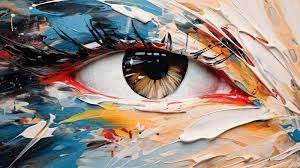
Palette knives are ideal for layering paint, allowing artists to build up rich, complex surfaces. By applying multiple layers of paint with varying thicknesses, artists can create depth and dimensions in their work.
8. SCUMBLING:

Scumbling involves applying a thin layer of opaque or semi-opaque paint over a dry base layer using a palette knife. This technique can create a soft, hazy effect and add visual interest to the painting.
Choosing the right Palette Knife
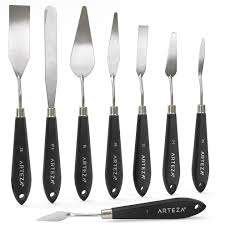
Choosing the right palette knife is essential for artists to achieve their desired painting results. Here are some tips and advice to consider when selecting a palette knife:
1. Blade Shape:
Palette knives come in various blade shapes, each serving a different purpose. For applying paint in broad strokes or spreading large areas of color, a straight or angled blade works well. A pointed or tapered is ideal for creating fine details and precise lines. Experiment with different blade shapes to find what works best for your painting style.
2. Flexibility:
Consider the flexibility of the palette knife blade. A more flexible blade allows for greater control and versatility in application. It can blend and curve with pressure applied, making it easier to create smooth transactions and delicate effects. Conversely, a stiffer blade provides more resistance and is better suited for applying thick impasto layers or scraping techniques.
3. Handle Design:
Pay attention to the handle design of the palette knife. A comfortable and ergonomic handle can reduce hand fatigue during long painting sessions and improve overall control. Some palette knives have wooden handles, while others feature rubber or plastic grips for added comfort and stability. Choose a handle design that feels comfortable in your hand and allows for precise manipulation of the knife.
4. Material Quality:
Look for palette knives made from high- quality materials that are durable and long-lasting. Stainless steel blades are preferred for their strength and resistance to rust and corrosion. Additionally, consider the construction of the knife, ensuring that the blade is securely attached to the handle for stability and reliability.
5. Experimentation:
- Do not be afraid to experiment with different palette knives to discover what works best for you. Try out knives with varying blade shapes, sizes, and flexibility to see how they affect your painting techniques and outcomes. By exploring different options, you can find the perfect palette knife that suits your style and preferences.
Ultimately, choosing the right palette knife is a personal decision that depends on your painting style, preferences, and techniques. Take the time to explore your options, test out different knives, and find the one that feels most comfortable and effective for your artistic practice.
Palette Knife vs Brush
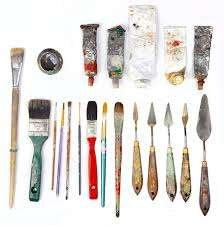
When comparing palette knives with traditional brushes, it’s essential to highlight their unique characteristics and applications:
1. Overview of Palette Knives and Brushes:
Palette knives and brushes are essential tools in the arsenal of any painter, each offering distinct advantages and applications. Palette knives consist of a handle attached to a flat, flexible metal blade, while brushes feature bristles or hairs attached to a handle. Palette knives are known for their ability to create thick impasto textures, apply paint in broad strokes, and achieve expressive, gestural marks. On the other hand, brushes excel in providing precision, control, and the ability to create smooth, blended transactions. Both tools come in various shapes, sizes, and materials, catering to diverse painting techniques and styles.
2. Advantages of Palette Knives:
Palette knives offer several advantages to artists, make them a versatile tool in the world of painting. One key advantage is their ability to create thick impasto textures, allowing artists to build up layers of paint and add dimension to their work. Additionally, palette knives enable artists to apply paint in broad, sweeping strokes, making them ideal for creating bold, expressive marks. Another advantage is the versatility of palette knives, as they can be used for both mixing paint on the palette and applying it to the canvas. Their flat, flexible blades also allow for precise manipulation of paint, giving artists greater control over their compositions. Overall, the unique properties of palette knives make them a valuable tool for artists seeking to explore texture, gesture, and spontaneity in their work.
3. Advantages of Traditional Brushes:
Traditional brushes have long been a staple tool for artists, offering several advantages in the painting process. One key advantage is their versatility, as brushes come in a wide range of shapes, sizes, and bristle types of suit various painting techniques and styles. This versatility allows artists to achieve a diverse range of effects, from fine details to broad washes of color. Additionally, brushes offer precise control over the application of paint, allowing artists to manipulate pigment with precision and accuracy. Brushes also excel at blending color seamlessly, enabling artists to create smooth transitions and subtle gradients in their work. Furthermore, the flexibility of brush bristles allows for expressive mark-making, enabling artists to convey texture, movement, and emotion in their paintings. Overall, the advantages of traditional brushes lie in their adaptability, control, and ability to facilitate a wide range of artistic expressions.
4. Disadvantages of Palette Knives:
while palette knives offer unique advantages in painting, they also come with certain limitations. One disadvantage is their limited precision compared to traditional brushes, making them less suitable for intricate details or fine lines. Additionally, palette knives may require more practice and skill to master, as they involve a different technique than brushes and can be more challenging to control. Another limitation is their relatively limited range of application techniques compared to brushes, as palette knives are primarily used for impasto and textural effects rather than for smooth blending or precise mark-making. Furthermore, palette knives may not be suitable for all painting styles or subjects, particularly those that require subtle gradations of color or delicate brushwork. Overall, while palette knives offer unique opportunities for artistic expression, they may not always be the ideal tool for every painting situation.
5. Disadvantages of Traditional Brushes:
Traditional brushes have long been a staple tool for artist, but they also come with their own set of disadvantages. One such drawback is their tendency to wear out over time, especially with frequent use, which can result in bristle shedding and loss of shape. Additionally, traditional brushes require regular cleaning and maintenance to ensure their longevity and performance, which can be time-consuming and tedious for artists. Another disadvantage is their limited versatility compared to palette knives, as brushes are primarily designed for smooth blending, detailed work, and controlled application of paint. This limitation may make it challenging to achieve certain textural or impasto effects that are easily achievable with palette knives. Furthermore, traditional brushes may not be as suitable for large-scale paintings or expressive, gestural techniques as palette knives, as they often require more precise handling and control. Overall, while traditional brushes remain essential tools for many artists, they may not always offer the same flexibility and creative possibilities as other painting tools like palette knives.
6. Choosing the Right Tool:
In conclusion, choosing between palette knives and traditional brushes depends on various factors such as the desired artist effects, technique, and personal preference. While palette knives excel in creating textured, impasto effects and bold, expressive strokes, traditional brushes offer precision, smooth blending, and intricate detailing. It’s essential for artists to experiment with both tools and explore how they can complement each other in their creative practice. By integrating palette knives and brushes strategically, artists can enhance the depth and richness of their work, achieving a dynamic interplay of texture, form, and expression. Ultimately, embracing the versatility of both tools allows artists to push the boundaries of their artistic expression and unlock new possibilities in their painting journey.
Palette Knife Painting Tips
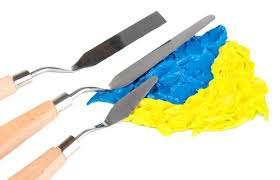
Here are some practical tips and tricks for painting with palette knives:
- Color Mixing: When mixing colors on the palette, use the flat side of palette knife to blend the paints together. Start with large amounts of paint and gradually mix in smaller amounts until you achieve the desired hue.
- Creating Smooth Transaction: To create smooth transactions between colors and shades, apply gentle pressure with the palette knife and use a light, sweeping motion. Experiment with different angles and techniques to achieve the desired effect.
- Texture and Depth: Palette knives are excellent tools for creating texture and depth in your paintings. Experiment with varying pressure, angles, and layering to build up interesting textures and add dimension to your artwork.
- Cleaning and Maintenance: After each painting session, it’s essential to clean your palette knives thoroughly to prevent paint buildup and maintain their effectiveness. Use a rag or paper towel to wipe off excess paint, then wash the knives with soap and water. Avoid letting paint dry on the blades, as it can be difficult to remove later.
By incorporating these tips into your painting process, you can harness the unique qualities of palette knives to create dynamic and expressive works of art. Experimentation and practice are key, so don’t be afraid to explore different techniques and push the boundaries of your creativity.
Palette Knife Still Life
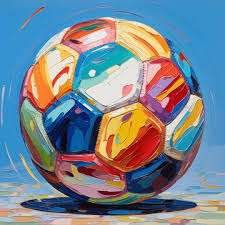
Painting a still life with palette knives can be a fun and rewarding experience. Here’s a step-by-step tutorial along with a list of materials you will need:
Materials Needs:
- Canvas or canvas board
- Palette knives (various shapes and sizes)
- Acrylic or oil paints
- Palette for mixing colors
- Brushes (optional, for touch-ups)
- Still life objects (fruits, flowers, vases, etc)
- Palette (wooden, plastic, or disposable)
Step-by-step Tutorial:
Step 1: Set Up Your Workspace
- Choose a well-lit area with enough space to work comfortably.
- Set up your easel and place your canvas on it. Ensure the canvas is secured and stable.
- Arrange your still life objects on a table or pedestal next to your easel.
Step 2: Sketch Your Composition
- Using a pencil or charcoal, lightly sketch the outlines of your still life objects on the canvas. Focus on capturing the basic shapes and proportions.
Step 3: Mix Your Colors
- Squeeze out your chosen paint colors onto the palette.
- Use your palette knives to mix colors directly on the palette until you achieve the desired shades and tones. Palette knives are great for creating unique color blends and textures.
Step 4: Start Blocking In Shapes
- Begin painting by applying thick layers of paint directly onto the canvas using your palette knives.
- Use large, flat palette knives to block in the basic shapes of your still life objects. Focus on capturing the general forms and colors.
Step 5: Add Texture and Details
- Switch to smaller palette knives to add texture and finer details to your painting.
- Use the edge of the palette knife to create intricate lines, highlights, and shadows. Experiment with different techniques to achieve interesting textures.
Step 6: Build Up Layers
- Continue to layer paint onto the canvas, gradually building up the depth and dimension of your still life.
- Use a variety of palette knife techniques, such as scumbling, scraping, and impasto, to create dynamic surfaces and effects.
Step 7: Refine and Adjust
- Step back and assess your painting from a distance.
- Use your palette knives or brushes to make any necessary adjustments or refinements to the composition, colors, and details.
Step 8: Final Touches
- Once you’re satisfied with your painting, let it dry completely.
- Sign your artwork and consider applying a varnish to protect and enhance the finished piece.
Step 9: Clean Up
- Clean your palette knives and brushes thoroughly with soap and water or the appropriate solvent for your chosen paint medium.
Store your paints and tools properly to keep them in good condition for future use.
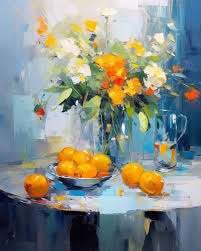
Tips:
- Experiment with different palette knife techniques to create a variety of effects, from smooth blends to bold impasto.
- Don’t be afraid to scrape away paint or make bold strokes with your palette knife to achieve interesting textures and shapes.
- Take breaks and step back periodically to assess your painting from a distance and identify areas for improvement.
Painting with palette knives can be a freeing and expressive experience, allowing you to create bold, textured artwork with a unique sense of energy and movement. Enjoy the process and let your creativity flow!
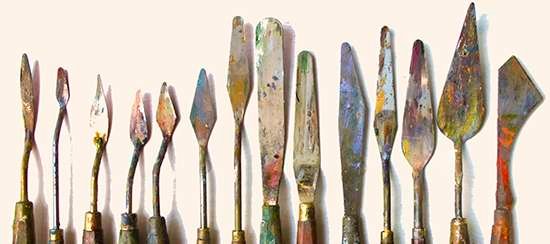
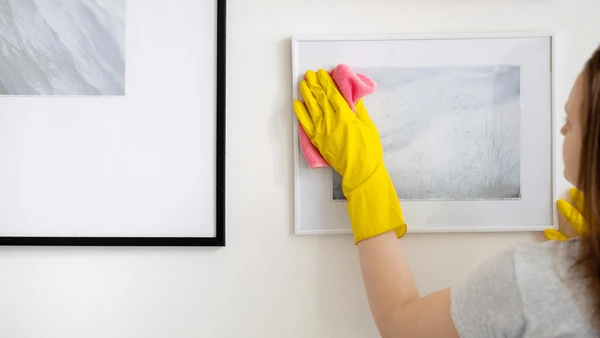
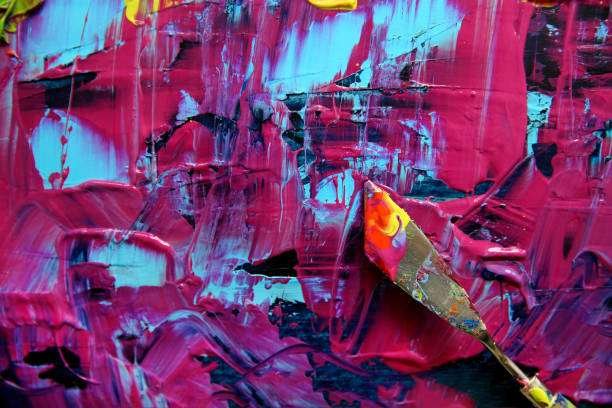


5 Comments
Palette knives ka use pehle mushkil lagta tha, lekin ab confidence aa gaya hai, shukriya.
Yeh post beginners ke liye perfect hai, sab kuch simple aur clear hai.
Yeh blog bohot informative hai, palette knives ke techniques samajhne mein madad mili!
The way you explained each type of palette knife and its purpose is super helpful for beginners like me.
This blog really opened my eyes to the artistic possibilities of palette knives. Thank you for sharing!